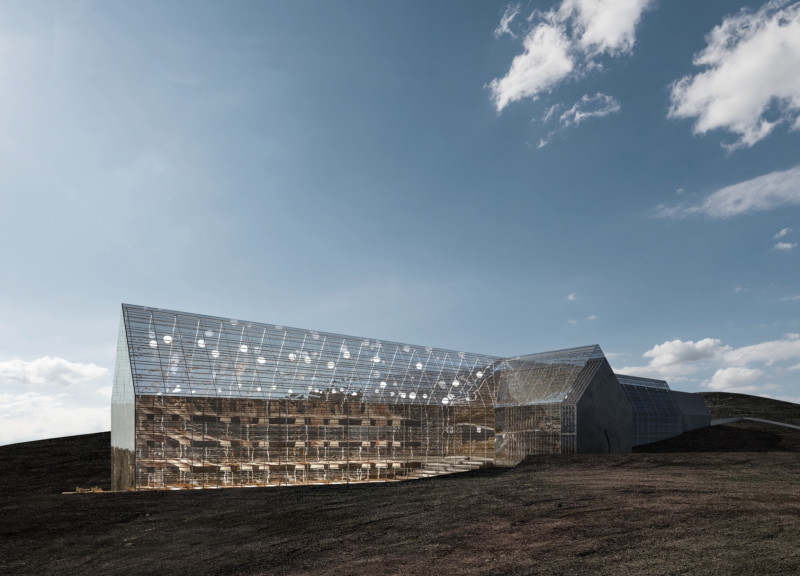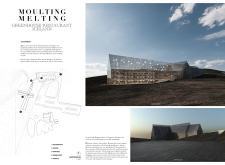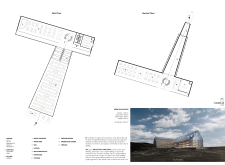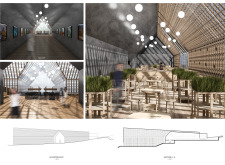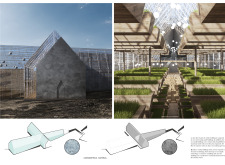5 key facts about this project
The greenhouse aspect of the design not only hosts the restaurant but also incorporates elements that connect diners to the local ecosystem. By merging the functions of a restaurant and a greenhouse, this project reinforces the relationship between food and nature. The design underlines the importance of sustainability within the culinary industry while providing a versatile space for community interaction and cultural engagement.
Unique Design Approaches That Enhance Functionality
The Moulting Melting project distinguishes itself through its use of innovative design strategies. The predominant use of glass in the main structure allows for natural light to permeate the interiors, creating a dynamic atmosphere that evolves throughout the day. This transparency fosters a direct relationship between the occupants and the natural setting, enhancing the overall sensory experience.
The architectural layout incorporates various spaces—dining areas, a multipurpose hall, and exhibitions—making the restaurant not just a place to eat but a venue for cultural exchange. The integration of a gallery space dedicated to local art further links the culinary experience with regional identity, allowing visitors to engage with Icelandic culture directly.
The project employs a thoughtful material palette, including glass, concrete, wood, and metal. The use of concrete provides structural integrity and a strong base, while wood adds warmth to the interiors, balancing the coldness associated with the surrounding landscape. Metal details are strategically used to enhance the visual appeal while maintaining strength, particularly in structural components.
Architectural Details and Enhancement of Visitor Experience
The spiral staircase serves as a key architectural feature, facilitating movement between levels and inviting exploration of the space. The arrangement of furniture within the open areas promotes social interaction and connection among diners. The design also features a greenhouse garden, emphasizing the restaurant's commitment to sustainability and local sourcing, allowing fresh produce to be a part of the menu.
The careful consideration of spatial layout contributes significantly to visitor experience. The orientation of the building aligns with the natural contours of the terrain, creating an organic flow that guides movement and enhances the immersive quality of the restaurant. The evolving light conditions throughout the day, reflected through the glass, contribute to a changing ambient atmosphere that influences both dining and engagement with the environment.
By reviewing the architectural plans, sections, and designs, readers can gain deeper insights into the intricate details and innovative approaches employed in the Moulting Melting Greenhouse Restaurant project. Exploring this presentation will illuminate how thoughtful architecture can create spaces that are not only functional but also enriching for their users.


